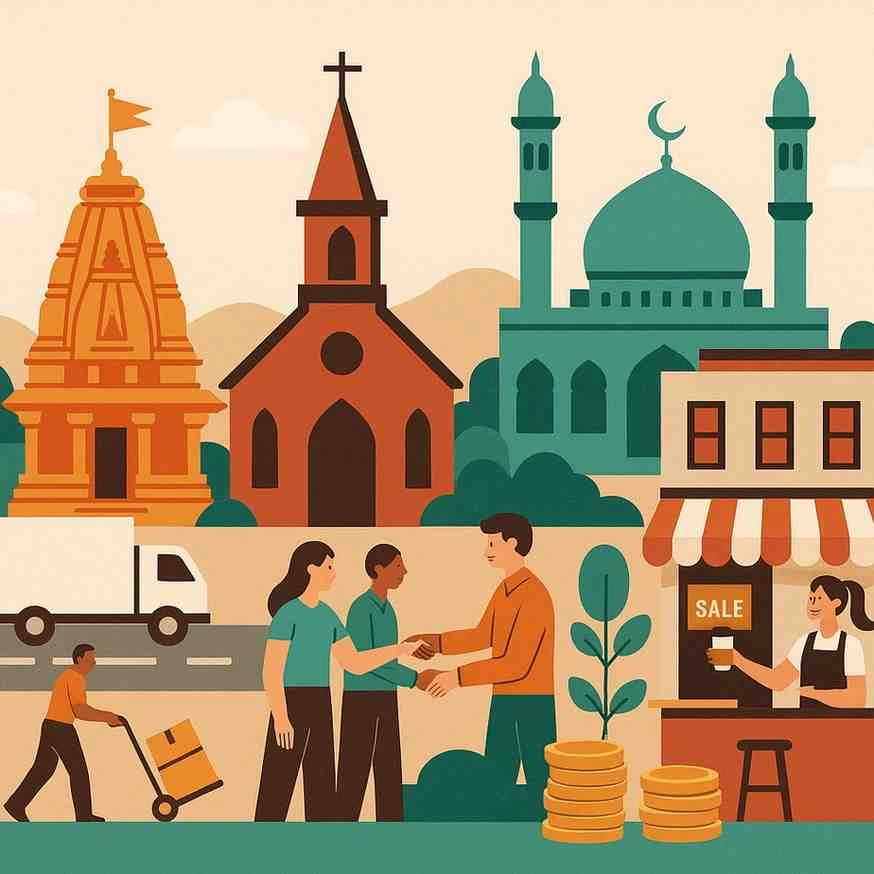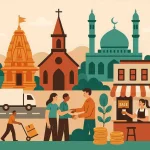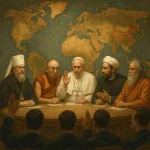How Temples, Churches, and Mosques Drive Local Economies
Places of worship are often seen primarily as spiritual centers, but their influence extends far beyond prayer and ritual. Temples, churches, and mosques have historically played major roles in shaping local economies. Their presence attracts visitors, creates jobs, supports businesses, and fosters community development. In many towns and cities across the world, religious institutions are not only guardians of faith—they are engines of economic activity that fuel growth in ways both visible and subtle.
The most direct way these institutions impact local economies is through foot traffic. Large temples, famous churches, and historic mosques draw thousands of visitors every year—sometimes millions. Pilgrims, tourists, and devotees spend money on transportation, food, accommodation, and shopping. This creates demand for hotels, restaurants, tea stalls, taxis, and shops that sell local crafts or religious items. A spiritual site often acts as the heartbeat of an entire marketplace. Many towns owe their livelihood to the steady flow of people who come to pray, seek blessings, or explore cultural heritage.
Another significant economic contribution comes from employment. Religious institutions require staff to maintain operations: priests, caretakers, musicians, teachers, office workers, gardeners, and security personnel all depend on these spaces for income. Festivals and special events create additional temporary jobs—from decorators and caterers to volunteers who receive small stipends. In many regions, temples and mosques are among the largest local employers, providing stable work to people of diverse backgrounds.
Charitable services offered by religious institutions also boost local economies. Many temples run free kitchens, schools, hospitals, or community centers. Churches often support food banks, shelters, and educational programs. Mosques frequently offer scholarships, medical clinics, and social assistance. These services reduce the burden on government systems while improving the quality of life for local residents. Education and healthcare programs, in particular, help nurture skilled and healthy communities, which in turn strengthens the economy in the long run.
Festivals bring another layer of economic impact. Religious celebrations such as temple fairs, Christmas markets, or Eid gatherings attract huge crowds and generate significant business. Vendors sell clothing, sweets, toys, decorations, and handicrafts. Local artisans benefit from increased demand, while transport providers see higher earnings. Seasonal tourism around festivals boosts income for countless families. These cultural events often become major revenue streams for towns, sometimes providing enough income to sustain businesses throughout the year.
Construction and maintenance of religious buildings also contribute to the economy. Building a temple or renovating a church requires architects, engineers, masons, carpenters, electricians, and laborers. These projects circulate money locally and support industries such as construction materials, logistics, and design services. Even ongoing maintenance—cleaning, repairs, painting, and landscaping—creates continuous economic activity. Religious institutions often prioritize using local suppliers and workers, multiplying their economic impact.
Beyond direct spending and employment, temples, churches, and mosques strengthen social capital, which indirectly supports local economies. These places often serve as community hubs where people gather, exchange ideas, and build relationships. Social connections foster trust, cooperation, and community leadership—qualities that encourage entrepreneurship and local business development. People who meet in these spaces may later collaborate on new initiatives or support each other’s ventures, adding another layer of economic vitality.
In rural areas, religious centers often act as stabilizing forces. They attract development projects, improve infrastructure, and bring visibility to small villages. Roads, public transportation, electricity, and sanitation are often upgraded around important temples or mosques. These improvements benefit the entire community, making it easier for residents to travel, do business, and access markets. A place of worship becomes a magnet for progress.
In urban settings, the economic influence is equally significant. Churches in busy neighborhoods support surrounding cafés and bookstores. Mosques located near market areas attract daily footfall that boosts local shops. Temples in cities often become cultural landmarks where festivals draw both local and international visitors. The blend of spirituality, culture, and commerce creates vibrant spaces that enrich urban life.
However, the economic power of religious institutions must be balanced with responsible management. Crowded pilgrimage centers may face challenges like pollution, traffic, or waste management. Effective planning ensures that economic growth remains sustainable and community-friendly. When religious institutions collaborate with local authorities, they can channel economic benefits while preserving cultural and environmental integrity.
Ultimately, temples, churches, and mosques contribute to local economies by blending spirituality with everyday life. They bring people together, inspire generosity, and create opportunities for livelihoods. Their presence keeps traditional crafts alive, supports regional cuisines, and nurtures community-based industries.
While their primary purpose is spiritual, their economic footprint is undeniable. They remind us that places of worship are not just sacred spaces—they are dynamic centers of culture, commerce, and community growth that shape the economic heartbeat of the regions they serve.
~Religion World Bureau









